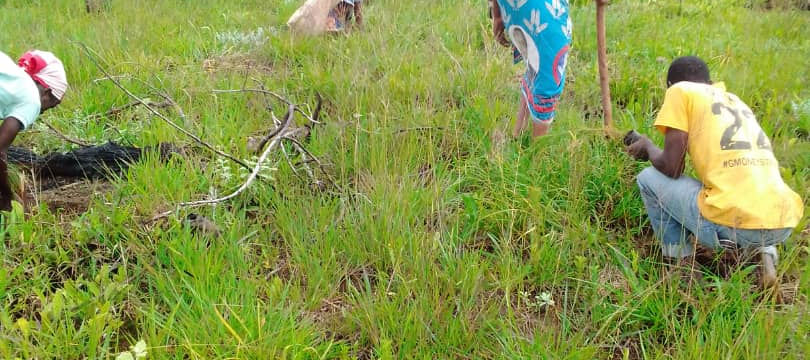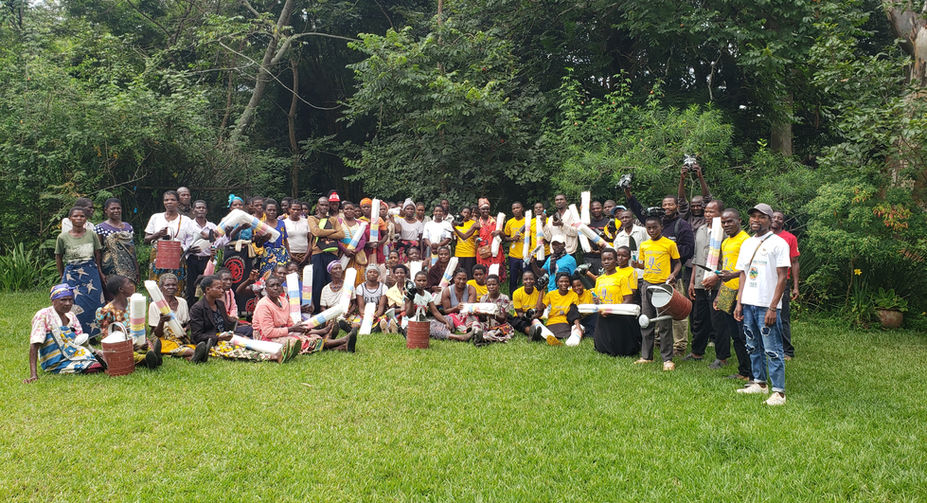Tree Planting
It all started with the idea of reforesting the water catchments after all the pine along the streams had been harvested.
Tree planting should not be a justification for cutting down trees, an antidote to deforestation. It is not THE solution. It is part of the solution. The greater part should be to prevent the trees from being cut down in the first place, providing people with means to harvest wood without killing the trees, making the trees more valuable standing than down.
So we now work on protection, allowing for natural regenration AND spot planting, rather than wholesale tree planting. We realised that so long as we could protect areas from fires (all man-made due to careless burning of fields, hunting, to gain access to firewood to name but a few) trees would grow back, on their own. Nature is very good at doing her thing, but she needs a little help. And that is where TREEZ comes in.
We started here:
We wanted to plant trees that the communties would find useful, trees that would not be cut down for firewood, trees that would help protect the water table.
So we chose fruit trees, nitrogen fixing trees, indigenous trees and fast growing trees that could be coppiced.
Fruit trees so that the communities could harvest the fruit for domestic or for income generation
- Nitrogen fixing trees to restore the nutrients in the soil
- Indigenous trees to help restore the ecosystem
- Fast growing trees that can be coppiced to teach the communities how to harvest firewood sustainably.
We set up a tree seedling nursery at Zomba Forest Lodge and encouraged community members to do the same.
And with the Run4Reforestation earnings and employing the Zomba Tour Guide Association, we have now set up a seedling nursery on the Plateau with seeds harvested on the Plateau, and a new nursery is on its way.
A major lesson for us was to find a means to ensure the survival of these trees - we discovered early on that planting trees was the easy bit:
We would pay a group of local people (normally women) and they would prepare the area, make the holes and plant the trees and for each job, they would get paid.
But unless we encouraged the groups to do the maintenance; ie: the clearing of the bush around the young trees, the trees would soon be swamped and die, or they would be eaten by goats, trampled by cows, burnt. Their chances of survival without outside help was minimal.
Each year we tried something different and each year we would make a little more progress.
In 2019, we decided to let the groups manage their own trees on the premise that they would get paid at year end (February 2020) for every tree that survived, including trees that had self-seeded.
In February 2020, we went out and counted: we were delighted to find that over 6,000 young trees have survived. This has been much more successful and we believe that each year more trees will survive as the communities better understand how it works.
We are now here:
In the 2021 to 2022 tree counting season, so far, groups have counted more than 28,000 trees
We are now expanding our tree planting to community woodlots and people's homes, but also adding seedlings to areas which are naturally regenerating but could do with more trees, and each group is setting up their own tree nursery AND composting with a mixture of indigenous, nitrogen fixing and agroforestry/commercial tree seedlings.
So far we have planted/protected over 250 hectares of trees, that is roughly 250,000 trees :)
And in case you were wondering why our figures jumped from 30 hectares to 250, it is because we have decided to include the areas that we have protected, rather than only ones we have planted.
We are still working on getting official permission for all this... fingers crossed, 2023 will be the year we are granted the Conservation Concession for the 250 hectares :)




































